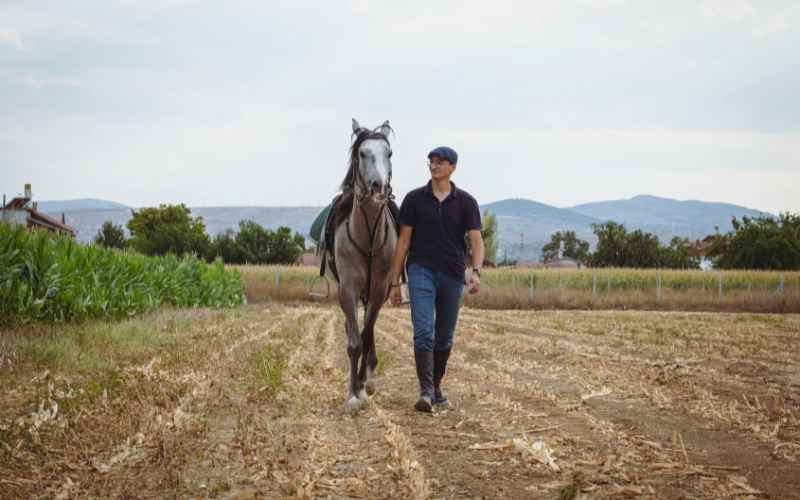
Potassium plays a big role in your horse’s health, from muscle function to nerve activity. It’s naturally present in most forages and pasture grasses across Australia, making it an essential part of the diet for most horses.
In this article, we’ll walk through what potassium does, whether too much is really a problem, and the only situation where it might be.
Potassium is an important mineral that helps regulate nerve signals, muscle contraction, and water balance in the body. Without enough potassium, a horse’s cells can’t function properly. That’s why it’s a key part of electrolyte balance, especially important for working or sweating horses.
One of the main functions of potassium is maintaining neuromuscular control, in other words, helping muscles contract and relax. Low potassium levels can even affect a horse’s heartbeat and overall energy.
If your horse is on a forage-heavy diet or grazing on lush pasture, it’s fair to ask: is that too much potassium?
The short answer is: in most cases, no.
Here’s why:
According to the NRC (Nutrient Requirements of Horses), the minimum daily requirement for potassium is around 25–50 mg per kg of bodyweight. But most hay and pasture grasses naturally contain much more, sometimes 2–3% potassium. That means a 500 kg horse eating 10 kg of forage could be getting around 100 g of potassium per day, far beyond what’s technically needed.
Despite this, most horses thrive. Their bodies are well adapted to handle higher-than-required levels without negative effects.
One of the reasons excess potassium usually isn’t an issue is because horses are very good at getting rid of it. They excrete potassium through urine, faeces, and sweat, and the more they consume, the more efficient this system becomes.
This is particularly handy for horses grazing on rich, green pasture. However, sweating too much in hot climates or during heavy exercise can actually lower potassium levels, so it’s something to watch for in working horses.
There’s no strong research linking high potassium intake from feed to negative long-term health effects in healthy horses. Horses with balanced diets that include other essential minerals like salt, calcium, and magnesium tend to handle potassium just fine.
There is one exception to all this, a condition called Hyperkalemic Periodic Paralysis (HYPP).
HYPP is a genetic disorder affecting muscle cells, most commonly found in horses with certain bloodlines (like descendants of the stallion Impressive). Horses with this condition are very sensitive to potassium. Even normal levels in the diet can trigger muscle cramps, weakness, or more severe symptoms.
If your horse has HYPP, vets recommend keeping dietary potassium below 1%. That’s still more than the minimum daily requirement, but lower than typical forage levels. Managing this requires careful feed planning, testing hay, and avoiding high-potassium feeds.
For the vast majority of horses, potassium isn’t something to stress over. It’s naturally abundant in forage and pasture, and horses are built to handle more than they need.
Just keep a few things in mind:
And if you’re unsure about your hay or pasture, a simple feed test can give you the clarity you need.
Disclaimer: LocalAg shares this information based on experience and publicly available research. Always consult a vet or equine nutritionist when making changes to your horse’s diet or managing health conditions.
Search our marketplace